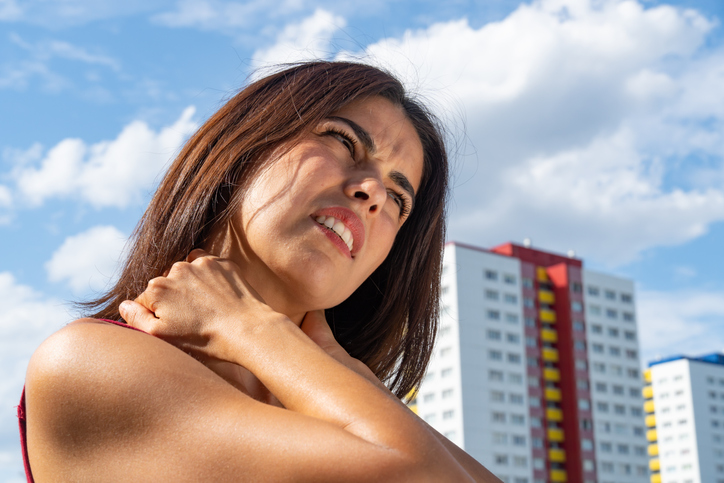Pain
What Is Chronic Pain Syndrome (CPS)?

Chronic pain syndrome (CPS) is not the same condition as chronic pain; CPS involves other symptoms in addition to chronic pain. It is similar to chronic pain as it may develop after the original cause of pain, such as an injury, has healed, and pain must be present for a minimum of 6 months before a CPS diagnosis is considered. It is estimated that 25 percent of individuals who have chronic pain receive a diagnosis of chronic pain syndrome.
Triggers
A variety of health conditions can trigger chronic pain syndrome. These include, but are not limited to, the following examples:
- Musculoskeletal conditions: Arthritis, disk herniation, fibromyalgia, Lyme Disease, polymyalgia rheumatica, piriformis syndrome, chronic overuse injuries
- Neurological conditions: Cervical radiculopathy, spinal stenosis, neuralgias, migraines, muscle tension headaches, temporomandibular joint dysfunction
- Urological conditions: Interstitial cystitis, prostatitis, urolithiasis
- Gastrointestinal conditions: Gastroesophageal reflux, pancreatitis, colitis
- Reproductive conditions: Endometriosis, adenomyosis
- Psychological conditions: Depression, bipolar, sleep disturbances
- Other health conditions: Cardiovascular disease, postoperative complications, cancer treatment complications
Symptoms
Symptoms associated with chronic pain syndrome may include the following:
- Joint and muscle pain
- Paraesthesia
- Fatigue
- Loss of endurance and flexibility
- Anxiety
- Lack of sleep
- Irritability
- Loss of libido
- Depression with or without suicidal thoughts
Manifestations
Manifestations of chronic pain syndrome may include the following:
- Isolation
- Relationship (family, friends, coworkers, etc.) issues
- Job loss
- Possible drug and/or alcohol abuse
Chronic pain syndrome often has both physical and mental symptoms. CPS can cause stress, and stress can lead to increased CPS symptoms and manifestations. This can become a vicious cycle.
Causes
The exact cause of chronic pain syndrome is not known. Suggested theories include the following:
- It is a learned behavior syndrome.
- It involves a connection between mechanical hypersensitivity and central sensitization.
- It involves changes to anterior cingulate structural and reactivity to emotional arousal.
Risk factors
Individuals who have a chronic pain condition, who experience depression, who smoke cigarettes or who are obese are at higher risk for developing chronic pain syndrome. Women and those over the age of 65 are also at higher risk for developing CPS.
Diagnosis
A diagnosis of chronic pain syndrome starts with a thorough medical history (when the pain started; any recent injury; type, severity and location of the pain; if anything helps the pain or makes it worse; and if any specific treatment eases the pain). Depending on the nature and location of the pain, a detailed examination of the musculoskeletal, neurological, gastrointestinal or reproductive system(s) will take place. Imaging tests, such as X-rays, CT scans and MRI scans, are often ordered. Blood work may also be done to determine any underlying condition(s).
Treatments
A variety of conventional and alternative treatments are available for chronic pain syndrome, including the following:
- Physical therapy
- Biofeedback
- Transcutaneous electrical nerve stimulation (TENS)
- Medications
- Temperature therapy
- Nerve blocks
- Spinal cord stimulation (SCS)
- Intrathecal pain pump implantation
- Cognitive behavioral therapy (CBT)
- Acceptance commitment therapy (ACT)
- Acupuncture
- Hypnosis
- Yoga










